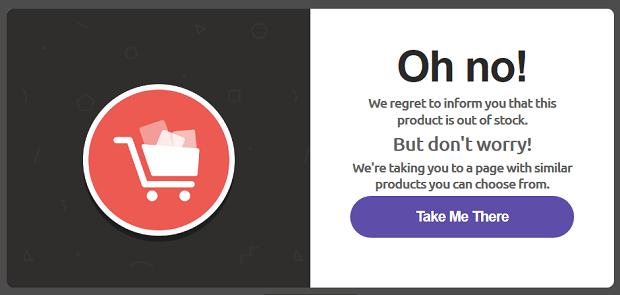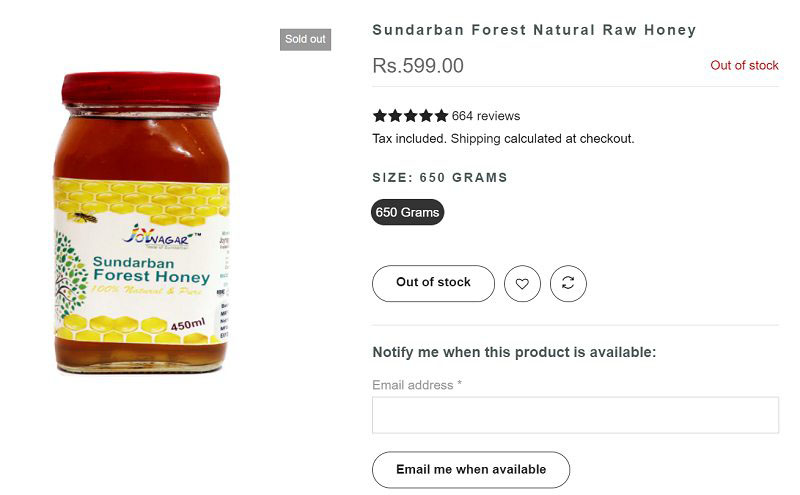How to Manage Out-Of-Stock Products on Your E-Commerce Site for SEO
Many eCommerce companies were unprepared for the significant rise in Out-Of-Stock Products on their sites when the pandemic panic-shopping of early 2020 first occurred.
Now, three years after the epidemic began, supply chain and shipping concerns endure influencing online merchants’ inventories, income, and more.
Regrettably, these issues aren’t going away anytime soon, so it’s time to develop a strategy for dealing with them.
This article is sure to support you in doing so, with tactics and techniques for managing your inventory problems from an SEO viewpoint. We’ll go over the most common blunders we see from businesses, as well as practices we believe will increase sales, decrease out-of-stock SEO, and keep delighted consumers.

Source: optinmonster.com
Quick Overview
How Inventory & SEO Performance Interact: E-Commerce Site for SEO
Inventory and SEO have a very close, intertwined relationship. If you’re not taking inventory into account in your SEO strategy, you’re probably leaving money on the table. The more accurate information about your products that has been indexed by Google’s bots, the better-informed consumers are when they search for your products.
Addressing issues with missing product pages, dead links, and errors surrounding discontinued products are all SEO best practices.
Discontinued Product Page – Mistakes to Avoid
So far, we’ve alluded to the fact that it’s essential for online retailers not to delete out-of-stock pages or create other issues on product pages. There are even more mistakes you’ll want to avoid when discontinuing a product.
Mistake #1: Deleting Product Pages
This is one of the most common mistakes we see from eCommerce companies concerning their discontinued products, and it’s no wonder why this problem occurs so frequently. The temptation is understandable from an SEO standpoint because if Google cannot tell what a website “does” or “sells,” it’s more difficult for clients to find that site.
While this may seem like a reasonable idea, if you do this and consumers happen across your product pages through search results (and the links aren’t redirected), they’re likely not going to buy from you if they can’t find what they’re looking for.
One of the ways to avoid this mistake is to have a plan in place. If you know when an item will be replaced by a new edition or discontinued, you should have a process for updating product pages so that consumers can find exactly what they’re looking for in addition to having up-to-date information on price and availability.
Mistake #2: Redirecting Products to the Homepage
If you discontinue a product, don’t just redirect the URL to your homepage. Doing so will shift all of your keyword rankings for that product to zero, and Google’s bots won’t know what products you sell or what keywords are relevant on your website.
What ends up happening, then, is that your website won’t be indexed highly for anything. It can take Google’s bots some time to realize what you sell and index all of the products on your site again correctly after redirecting product URLs to your homepage.
This is why it’s essential to put an end date in place when discontinuing a product (e.g. “Discontinue Date: 06/01/2017”). When you do so, you’ll want to redirect the link on your product’s URL to another page on your site with up-to-date information and a message for consumers (e.g. “This product is discontinued and no longer available.”).
Mistake #3: Using Your Product Page in a Different Way
If you’re redirecting the URL of discontinued products to another page on your site, make sure that page isn’t using the same keywords (or any keywords at all) as the original product. Google won’t be able to understand what your website is about or what products you sell if you have two pages competing for the same terms.
Related Post : How e-Commerce Grows with SSMD Marketing
7 Proven Temporary Out-of-Stock Product Management Methods
You should react to out-of-stock products in one of two ways: you have none now but used to have them, or you’ve retired them for good. To determine which category is correct for the product in question, your page should disclose this information. This allows customers to know whether they should expect it back or not.
Out-of-stock products are an inevitable part of online retail, but that doesn’t mean you have to suffer from poor SEO performance if they’re not managed correctly. Using these tactics, you can ensure that customers will find your website even if stock is unavailable at the moment.
Allow Pre-Orders
You can allow customers to put items on their wish list or sign up for product updates with this option. If you choose the latter, suggest that your subscribers use another form of communication if they have questions about availability. Offer another way for consumers to get in touch so you can successfully manage inquiries surrounding products that are out-of-stock while continuing to build your email list and increase consumer loyalty.

Appropriately Label For Product Page
If you’re redirecting URLs to another page, make sure that the product’s page includes the correct label for it. For example, if your website is only selling products that are currently in stock, don’t keep “Discontinued” anywhere on the page. If this information isn’t accurate, Google will still think the product is available, which means it won’t be indexed.
Use Product Schema Markup for SERPs
Schema markup can be used to give search engines additional information about products on your site. This is another way you can help avoid the loss of rankings due to discontinuing a product by giving Google more information about other products on your website (or similar products).

Permit Email Notifications When Products Are Back in Stock
If you do allow email subscriptions, consider when it’d be most appropriate to send them. If a product is discontinued at 11 AM but comes back in stock at 1 PM, don’t wait until after 2 PM to notify subscribers. They’ll likely have already purchased the product elsewhere by then.

Link to Related Products
When customers are looking for an unavailable product, you can entice them with suggestions. For example, if they’re shopping for shoes on your website and you don’t have their size in stock, link to other pairs of shoes that are available or that are similar to the product they wanted. This will keep them on your site and give you a better chance of converting their visit into a sale.
Push Products to Bottom of Category Page
If you have several products that are out-of-stock, don’t continue displaying those pages at the top of your category page. Even if they do show up as some of the first results in Google, it’ll be difficult for searchers to find available related products. Instead, move the out-of-stock items down so they’re not taking up valuable real estate on your top page.
Apply Unavailable Products
By default, Google will show users “Sponsored” search results when they conduct a query for an out-of-stock product. To make sure your organic results get found, add “unavailable” or something similar in parenthesis next to the link when it doesn’t appear in stock. This way, you can avoid penalization for out-of-stock products while keeping rankings for in-demand items high.
Even if you follow all these best practices, you’re not in the clear just yet. Google is in the process of rolling out an algorithm update that will better handle products that are in-demand and out-of-stock at the same time. Webmasters who make the most of these tactics today will be able to avoid loss of rankings due to this upcoming update (and future updates like it).
FIND THE CORRECT STRATEGY FOR YOUR SITE IN A FEW MINUTES
If you’re stumped about which of the techniques above to use on your eCommerce website, you’re not alone. Begin by concentrating on just two things:
- Providing potential consumers the information they want
- Deciding which operations you’re comfortable carrying out yourself
If you’re familiar with eCommerce SEO, but not the best practices and techniques for your industry, this should help you understand which ones are most important. You may always rely on an expert eCommerce SEO firm to handle the rest.
Don’t let out-of-stock product pages bring you down. Make an informed decision about how to deal with outdated product pages now so that you may preserve your link equity, convert more customers, and avoid indexing difficulties.
SSMD Pte Ltd,, February 24, 2022















